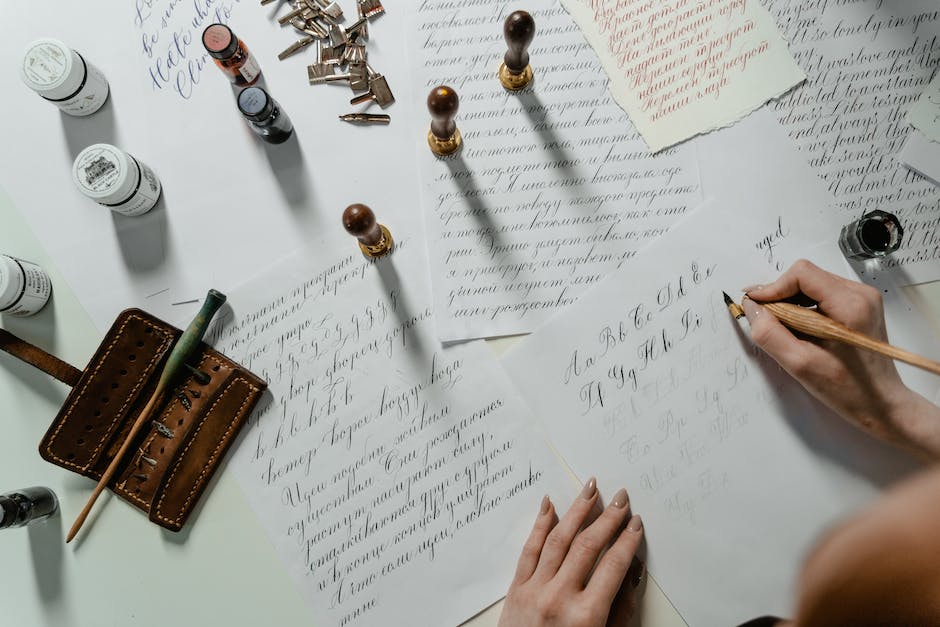Typography, in its simplest form, is the art of arranging type. It’s a vital aspect of any design project and extends far beyond just choosing a font. Indeed, it is a powerful tool that can lend weight to your message, guide your reader’s eye, and even evoke emotion. In this post, we will explore the importance of typography in graphic design, delve into the different types of typography, and provide practical tips on how to use it effectively in your designs.
So, what makes typography so critical in graphic design? Why do we need to consider more than just the words we write? The answer lies in the fact that typography, when done right, can significantly enhance the readability, accessibility, and aesthetic appeal of your design. It’s not just about making things look good – it’s about ensuring your message is effectively communicated and understood.
Ready to learn more about this fascinating aspect of graphic design? Let’s jump right in.

The Role of Typography in Graphic Design
Typography is more than just a visual element in a design; it plays a crucial role in communicating a message and creating an impression. It can set the tone for your design, evoke emotions, and even influence the way your audience perceives your message. Ever noticed how a formal document looks strange when written in a playful font, or how a party invitation loses its appeal when set in a serious, heavy typeface? That’s the power of typography.
But how does typography achieve this? It does so through its ability to guide the reader’s eye, organize content, link related information together, and highlight important points. By using typography effectively, you can ensure that your design is not only appealing but also clear, readable, and impactful.
Types of Typography in Graphic Design
Typography isn’t a one-size-fits-all concept; there are different types, each with its own characteristics and applications. The most common types of typography in graphic design include Serif, Sans Serif, Script, and Display.
Serif typefaces, characterized by small lines or strokes attached to the ends of larger strokes, convey a sense of tradition, reliability, and respectability. Sans Serif typefaces, on the other hand, lack these additional strokes and are typically seen as modern, clean, and straightforward.
Script typefaces resemble handwriting and are often used for invitations, headings, and logos to add a personal or elegant touch. Finally, Display typefaces are designed for use at large sizes and are ideal for headlines or short bits of text that need to stand out.
Understanding these different types of typography and when to use them can greatly enhance your design’s effectiveness and appeal.
Components of Typography
Contrary to popular belief, typography extends beyond the realm of fonts and typefaces. It comprises various components that come together to form a harmonious design. Each component plays a unique role in enhancing the overall visual appeal and readability of the text. Let’s delve deeper into these elements.
Anatomy of a Typeface
Understanding the anatomy of a typeface is akin to understanding the building blocks of a structure. It helps us appreciate the nuances that contribute to the overall aesthetic of a design. Let’s examine the different parts of a typeface and their roles in design.
- Baseline: This is the line on which most letters ‘sit’ and it forms the foundation of a typeface.
- Cap-height: It refers to the height of a capital letter from the baseline.
- X-height: This is the height of a lowercase ‘x’ in a particular typeface, and it can influence the perceived size of the text.
- Ascender: These are the parts of lowercase letters that extend above the x-height, such as ‘b’ or ‘d’.
- Descender: These are the parts of lowercase letters that extend below the baseline, such as ‘p’ or ‘q’.
- Stem: This is the main vertical or diagonal stroke in a letterform.
Understanding Font Styles
Font styles can drastically alter the tone of a design. They can subtly influence the reader’s perception and evoke certain emotions. Hence, it’s crucial to choose a font style that aligns with the message you want to convey. Let’s discuss the different styles and their appropriate use cases.
- Serif: Serif fonts have small lines or strokes attached to the ends of larger strokes in a letter or symbol. They are often used in print and are considered more traditional or classical.
- Sans Serif: Sans serif fonts lack the small lines at the end of strokes. They are considered more modern and are often used in digital designs for their clean, crisp appearance.
- Script: Script fonts mimic handwriting and can be either formal or casual. They are often used for invitations, headings, and logos.
- Display: Display fonts are designed for use at large sizes and are often used for headings or titles. They come in a wide range of styles, from decorative to comic.
The Art of Choosing the Right Typeface
With an overwhelming array of typefaces available, choosing the right one can seem like a daunting task. However, it doesn’t have to be. Here are some practical tips to help you navigate this process.
First and foremost, understand the context and purpose of your design. The typeface should align with the message you want to convey. For example, a business document might require a more formal typeface like Times New Roman, while a children’s book might benefit from a more playful font.
Second, consider readability. The typeface should be legible at different sizes and from different distances. Finally, less is more. It’s advisable to stick to a maximum of two or three typefaces in a single design to maintain visual coherence and avoid confusion.
The Principles of Typographic Hierarchy
Good typography isn’t just about choosing the right font or color; it’s also about creating a clear and effective hierarchy. But what exactly is typographic hierarchy? Simply put, it’s a system of organizing type that establishes an order of importance within the data, allowing the reader to easily navigate the content and understand key messages. It’s the visual guidance that helps readers know where to start and where to go next.
There are four main principles of typographic hierarchy: scale, weight, color, and position.
Scale
Scale refers to the size of the text. In most cases, larger text is perceived as more important. This is why headlines and subheadings are often larger than body text.
Weight
Weight refers to the thickness of the characters. Bold text is often used to emphasize important information or create contrast.
Color
Color can also be used to establish hierarchy. Bright or contrasting colors can draw the reader’s attention to specific elements.
Position
The position of text on a page can also indicate its importance. Generally, text placed at the top of a page is seen as more important than text placed at the bottom.
By understanding and applying these principles, you can create designs that are not only visually appealing but also easy to understand and navigate.

The Role of Color in Typography
Color plays a significant role in typography. It’s not just about making things look pretty; color can greatly influence how a message is perceived. It can evoke emotions, catch attention, and even influence a person’s decision.
When choosing colors for your typography, it’s important to consider the context and the message you want to convey. Bright colors like red and yellow can grab attention and convey excitement or urgency, while more subdued colors like blue and gray can convey professionalism and reliability.
Contrast is also important when it comes to color in typography. High contrast between text and background can improve readability, while low contrast can create an elegant and subtle effect. However, too little contrast can make the text hard to read, especially for long blocks of text.
Remember, color is a powerful tool in typography. Use it wisely to enhance your designs and communicate your message effectively.
Common Typography Mistakes to Avoid
Even the most seasoned designers can slip up when it comes to typography. Understanding these common mistakes can help you avoid them and improve your overall design. One common mistake is using too many typefaces in one design. While it’s tempting to showcase different fonts, it can result in a cluttered and confusing design. Stick to a maximum of two or three typefaces per design.
Another common pitfall is ignoring typographic hierarchy. Hierarchy helps guide the reader’s eye and makes the content easier to consume. Without it, your design could be hard to navigate. Lastly, watch out for poor kerning – the space between characters. Too much or too little space can make the text hard to read.
Practical Applications of Typography in Graphic Design
With a solid understanding of typography fundamentals, it’s time to see how these concepts apply in real-world designs. Typography is everywhere in graphic design – from logos and branding to web design and print media.
- Logos: Typography can help convey a brand’s personality and values. For instance, a modern sans-serif font may suggest a forward-thinking, innovative company.
- Web Design: Good typography improves readability and user experience. It can guide users through a site and make information easy to find.
- Print Media: In brochures, magazines, and posters, typography can grab attention and guide readers through the content.
Further Resources for Learning Typography
If you’re keen to delve deeper into the world of typography, there are plenty of resources available. From books and online courses to blogs and tutorials, here are some places to start:
- The Elements of Typographic Style by Robert Bringhurst
- Typography Course on Coursera
- The ‘Learn’ section on typography.com
- Thinking with Type by Ellen Lupton
- The ‘Typography’ category on Smashing Magazine’s blog
| Key Points | Summary |
|---|---|
| The Role of Typography in Design | Typography is critical in communicating a message and creating a particular impression. It sets the tone for your design and influences the audience’s perception. |
| Components of Typography | Typography involves more than just typefaces and fonts. Other components like the anatomy of a typeface, font styles, and typographic hierarchy all play crucial roles in the overall design. |
| Color in Typography | Color can enhance typography by providing contrast, drawing attention, and setting the mood. |
| Common Typography Mistakes | Common pitfalls include using too many typefaces, ignoring typographic hierarchy, and poor kerning. |
| Practical Applications | Typography is used in various areas of graphic design, including logos, web design, and print media. |
